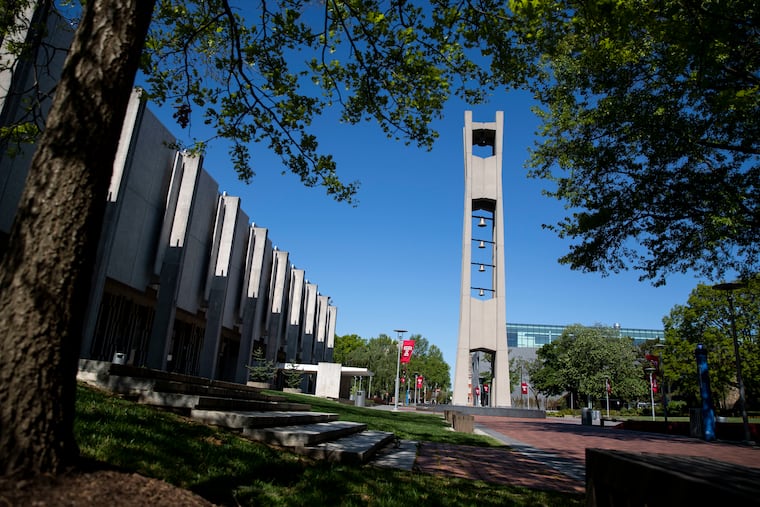Universities’ ‘hybrid’ reopening plans now offer the worst of both worlds | Opinion
Universities have struck a devil’s bargain as they prepare to reopen next month.

Welcome back, students!
We’re delighted that you’ve decided to return to campus for the fall 2020 semester. You’ll live in dormitories, work out at the gym, and see your friends.
But if you think you’re going to see your professors, think again. Your social life can be in person, but your classes are going online.
» READ MORE: Temple University intends to open for in-person classes this fall
That’s the devil’s bargain many universities have struck as they prepare to reopen next month. Harvard announced that 40% of its students will be invited to return to campus, but all of its instruction will be virtual. Other schools said they will conduct some face-to-face instruction, especially for laboratory and clinical classes, but that online would remain the “default teaching option,” as Stanford declared.
Similarly, Philadelphia-area colleges have told students that the bulk of their coursework will be online. “With the last national data showing a disturbing spike and spread of coronavirus infections around the country, we cannot ignore the potential danger of bringing thousands of students back to campus for face-to-face instruction,” West Chester University president Christopher Fiorentino wrote last week.
But West Chester is bringing students back to campus to enjoy “a wealth of out-of-class experiences,” its website adds. Residential facilities, the student union, and the campus recreation center will remain open, albeit at 50% capacity. But classrooms? Closed for business, for the most part.
Let’s be clear: Reopening colleges amid a pandemic poses a myriad of huge health threats and challenges. By tradition, college students live cheek to jowl. And most undergraduates are at an age when they’re likely to take risks and ignore our warnings about social distancing, as Temple University psychologist Laurence Steinberg has argued.
» READ MORE: Coronavirus exposed how broken American higher education really is | Will Bunch
That’s why Steinberg — and many other college faculty — are reluctant to teach face-to-face in the fall. In a survey last week of professors at Pennsylvania’s 14 state universities, nearly three-quarters said they would not feel safe teaching or interacting with students next semester.
But the classroom, as opposed to the rest of campus, is arguably the only place we’re really in charge. We can demonstrate proper precautions by wearing masks and keeping six feet apart. And we can require that students do the same.
Most of all, teaching in person will educate our students in ways we simply can’t when we’re all in front of our computers. A wide swath of research suggests that students learn more face-to-face than they do online, especially if they’re from low-income and minority backgrounds.
I understand that some professors have health conditions that will prevent them from teaching in person, just as there are some students who either can’t or don’t wish to return to campus. And, of course, we need a robust set of online classes for them.
» READ MORE: Should kids return to school in September? | Pro/Con
But if we’re already expecting certain students to come to campus, face-to-face instruction — not the online kind — should be our default teaching option once they arrive here. How can we justify letting the students take the risks of returning to campus, if we’re not willing to accept the much smaller risk of teaching them in class?
Over the past few months, we’ve heard lots of talk about colleges moving to a “hybrid” model. If that means truly combining in-person and virtual instruction, depending on students’ needs and circumstances, I’m all for it.
But I fear it’s coming to mean something very different: that students will live, play, and date in person — but learn online. In the brave new hybrid world, your fraternity will meet face-to-face while your classes meet on Zoom.
» FAQ: Your coronavirus questions, answered.
There’s nothing brave about that. Our students and their families are sacrificing enormous sums to go to college. The least we can do is to teach them when they get here.
Jonathan Zimmerman teaches education and history at the University of Pennsylvania. He is the author of “The Amateur Hour: A History of College Teaching in America,” which will be published in the fall by Johns Hopkins University Press.